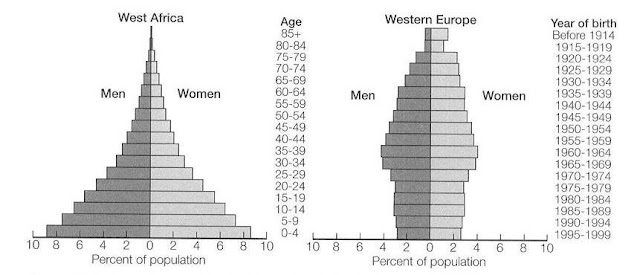"There is a strong tendency for countries with lower national IQ scores to have higher fertility rates and for countries with higher national IQ scores to have lower fertility rates."[21] _Wiki
Wiki
A world map showing countries by fertility rate. Period 2005-2010
7-8 Hijos / Children
6-7 Hijos / Children
5-6 Hijos / Children
4-5 Hijos / Children
3-4 Hijos / Children
2-3 Hijos / Children
0-2 Hijos / Children
Source:
Swivel
Definition: This entry gives a figure for the average number of children that would be born per woman if all women lived to the end of their childbearing years and bore children according to a given fertility rate at each age. The total fertility rate (TFR) is a more direct measure of the level of fertility than the crude birth rate, since it refers to births per woman. This indicator shows the potential for population change in the country. A rate of two children per woman is considered the replacement rate for a population, resulting in relative stability in terms of total numbers. Rates above two children indicate populations growing in size and whose median age is declining. Higher rates may also indicate difficulties for families, in some situations, to feed and educate their children and for women to enter the labor force. Rates below two children indicate populations decreasing in size and growing older. Global fertility rates are in general decline and this trend is most pronounced in industrialized countries, especially Western Europe, where populations are projected to decline dramatically over the next 50 years.
Source:
CIA World Factbook - Unless otherwise noted, information in this page is accurate as of January 1, 2009
Source:
Index Mundi
The TFR can be used as an estimate of the fertility growth factor in a population, e.g., whether the childbearing population is replacing itself or not. A TFR of 2,000 or above indicates that, on the average, couples are producing at least two children to replace themselves. When the TFR exceeds 2,000 for an extended period, the next generation of childbearing age will probably be larger than the present population of that age if all other factors affecting the population, such as death rates and migration, remain constant. Pennsylvania's TFR has been under 2,000 since 1972. However, it has remained relatively stable since then, although still below replacement level. The TFR is not meant to be used as an absolute measure of population trends, but can be helpful in understanding and analyzing them. There are many other factors to consider when determining population trends, such as crude birth rates, death rates and migration patterns. In fact, it would take several generations of a childbearing population maintaining a replacement level to just stabilize a specific population, again given that other factors, mainly age-specific death rates, were also maintained.
To obtain the 1996 TFR for Pennsylvania, compute the following:
Age of
Mother | Number of
Live Births | | Female
Population | | | | Age-Specific
Rate |
| 10-14 | 367 | / | 387,341 | x | 1000 | = | 0.9 |
| 15-19 | 15,267 | / | 408,422 | x | 1000 | = | 37.4 |
| 20-24 | 30,613 | / | 403,191 | x | 1000 | = | 75.9 |
| 25-29 | 42,245 | / | 397,398 | x | 1000 | = | 106.3 |
| 30-34 | 39,105 | / | 446,488 | x | 1000 | = | 87.6 |
| 35-39 | 17,378 | / | 469,810 | x | 1000 | = | 37.0 |
| 40-44 | 2,808 | / | 458,439 | x | 1000 | = | 6.1 |
| 45-49 | 94 | / | 413,377 | x | 1000 | = | 0.2 |
| | | | | Sum | | 351.4 |
The TFR is the sum of the age-specific birth rates multiplied by five or (351.4 x 5 = 1757.0).
Population Pyramids


